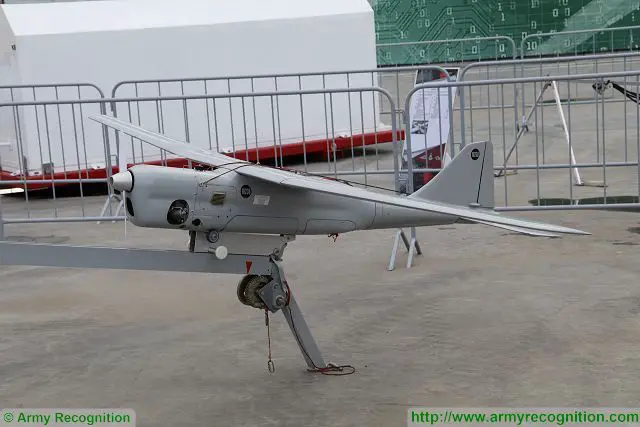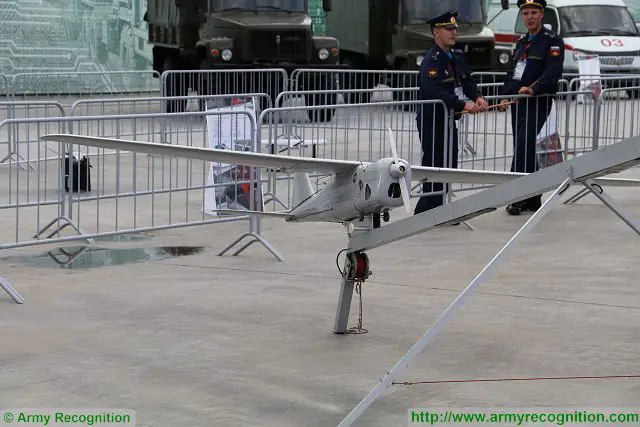|
|
|||
|
Defence & Security News - Russia
|
|||
|
|
|||
| Russian army artillery brigades and regiments will receive Orlan-10 reconnaissance UAVs. | |||
|
Russian field artillery brigades and regiments will receive Orlan-10 reconnaissance unmanned aerial vehicles (UAV) capable of using miniature electronic intelligence (ELINT) systems to detect enemy command posts, signal centers and the positions of artillery guns and multiple-launch rocket launchers.
|
|||
|
|
|||
 Russian air force Orlan-10 UAV (Unmanned Aerial Vehicle) at Army-2016 International Military Technical Forum near Moscow in September 2016. Russian air force Orlan-10 UAV (Unmanned Aerial Vehicle) at Army-2016 International Military Technical Forum near Moscow in September 2016. |
|||
|
|
|||
|
The primary purpose of the latest artillery survey UAV will be to spot enemy counterbattery radars that pinpoint artillery systems with an accuracy of several meters.
The sophisticated system has passed almost all of its tests, a Defense Ministry official close to the subject told the Izvestia daily. The table of organization and equipment of the new artillery survey units to operate the UAV is being devised. Initially, recon drones will be organic to the field artillery brigades of the combined-arms armies and then they will field with the intelligence, surveillance and reconnaissance inventory of the artillery regiments of the infantry and armored divisions. The unmanned artillery survey system is a rather complex high-tech product embodying several UAVs, a data analysis and processing station and an automated control system. The core of the unmanned artillery survey system is several Orlan-10 drones furnished with miniature ELINT pods able to detect the enemy’s signals traffic and emissions of his counterbattery radars. The UAVs downlink the gathered data to the system’s ground-based command post, where the processing station analyzes the intel gleaned and the automated control system adjusts the Orlans’ flight paths so that triangulate the radars detected. Once the target is acquired, one of the UAVs will loiter over its position, feeding its grids and video imagery to friendly artillery units to help them to obliterate the target. |
|||
|
|
|||
 |
|||
|
|
|||
|
The unmanned artillery survey system can acquire a wide range of targets, a field artillery officer familiar with the operation of the unique system tells the Izvestia daily. They are the radars of air defense systems, radars supporting the flight operations of enemy aircraft, and even miniature radars widely used by scouts and infantrymen for observation out to a range of several kilometers.
At present, the US and NATO militaries have a wide spectrum of counterbattery radars differing in dimensions and rocket, missile, artillery projectile and mortar bomb detection range. For instance, the AN/TPQ-36 in the US Army’s inventory is mounted on a small trailer easily towed by an ordinary Humvee. The radar spots up to 99 targets within a 90-deg. sector, seeing a rocket or missile at a range of 25 km and artillery projectile at 18 km out. It takes it less than 1 s to process the target’s trajectory and velocity data, which analysis enables the AN/TPQ-36 to position the gun that fired it. "According to the lessons learn from recent wars and armed conflicts, field artillery remains the Kling of Battle," expert Alexei Leonkov tells the Izvestia daily. "Massed artillery fire cannot be replaced even by air strikes. The best way to safeguard friendly forces against enemy artillery is to wipe it out with the so-called counterbattery fire by detecting and immediately suppressing the positions of enemy field artillery systems. For this reason, the United States and their NATO allies have always paid close attention to counterbattery radar development." The expert noted that the Orlan-10 unmanned artillery survey system would enable Russian artillerymen both to win duels with the enemy and establish their fire superiority in battle, on the one hand, and to inflict heavy damage on the enemy’s control and air defense systems and other important targets, according to the Izvestia daily. |
|||
|
|
|||
|
© Copyright 2017 TASS. All rights reserved. This material may not be published, broadcast, rewritten or redistributed.
|
|||
Russian army artillery brigades and regiments will receive Orlan-10 reconnaissance UAVs TASS 10201171
- Posted On














